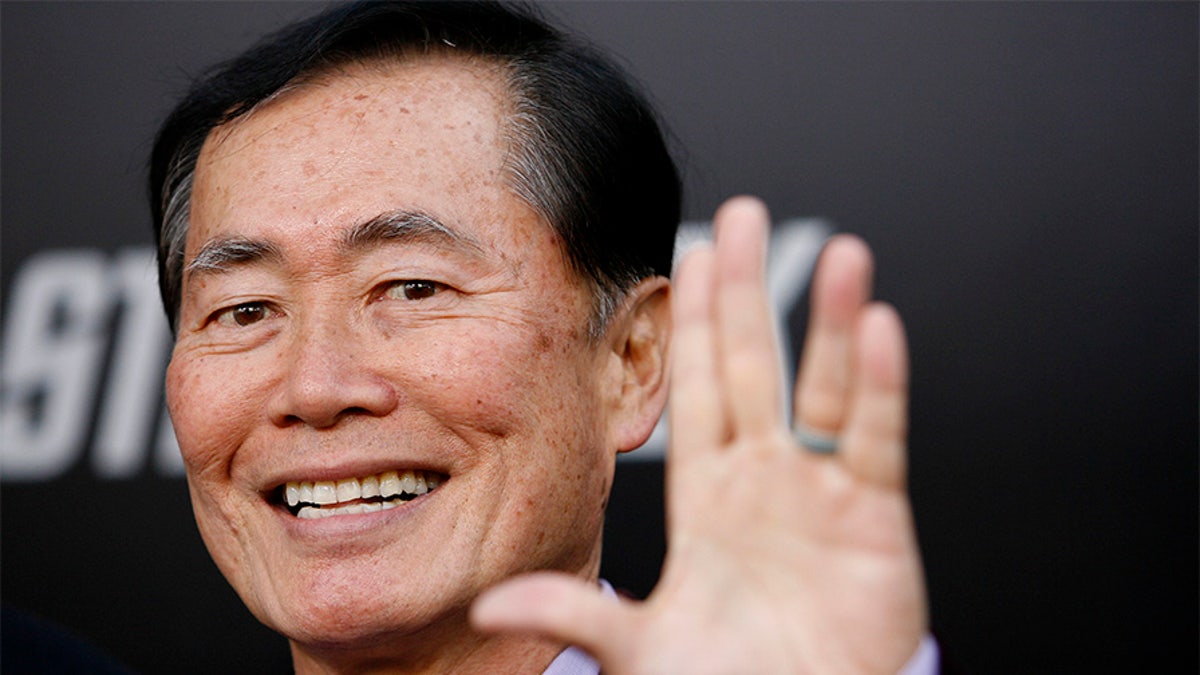
Actor George Takei gestures at the premiere of the movie "Star Trek" at the Grauman's Chinese theatre in Hollywood, California April 30, 2009. The movie opens in the U.S. on May 8. REUTERS/Mario Anzuoni (UNITED STATES ENTERTAINMENT) - GM1E55110TE01
NEW YORK – George Takei has been vocal about his distaste for President Donald Trump and now the "Star Trek" actor has made an app in hopes of making a "little mockery" of today's political climate.
Takei's new app, "House of Cats," is an augmented reality app that allows users to place a cartoon cat with some of President Donald Trump’s features into photos and videos with their friends and family. "Trumpy Cat" is joined by fellow feline characters such as "Meowlania," "Vladdy Putin" and "Lil’ Rocket Pug."
Takei said he made the app to lighten the mood.
"Well, I’m a political animal, and I’m also a cat lover," Takei told Fox News. "Now, we live in very, very intensely fraught times. You can get completely wrapped up in it, but if you take some steps back and see it in a larger context, these fraught times are absolutely preposterous. They’re absurd and it’s just laughable when you get that context and distance.
"So, combining politics and cats, we have an opportunity to laugh at it and make satire out of it. A little mockery of the situation, and I think that’s necessary for good health. To get a little tonic of laughter into one’s life," he told us.
Takei, who boasts more than 10 million followers on Facebook, has been very outspoken in the past over his dislike of the Trump administration. A percentage of the app’s proceeds will be donated to Refugees International, he said.
"Well right now I’m very close and very much involved in the turbulence of the times, and we need to be. Democracy is a very fragile thing," Takei said. "When I was a teenager, my father told me that our democracy is a people’s democracy, and people have the potential and the history of doing great things. America is great because of the history that we have, the ideals we hold dear. But, people are also fallible and we have a history of all the mistakes we made as a nation. One of them being what affected me as a 5-year-old child."
Takei and his family were among many Japanese-Americans placed in internment camps following the attack on Pearl Harbor and the subsequent involvement of the United States in World War II. Today, he’s not shy about drawing parallels between those experiences and what’s going on now.
"We happened to look just like the people that bombed Pearl Harbor, but we Japanese Americans are Americans. My mother was born in Sacramento, my father was a native San Franciscan," Takei shared. "They met and married in Los Angeles and my brother and sister and I were born in Los Angeles. We are Americans.
"To imprison us just because we look like the people that bombed Pearl Harbor is, in one context, absolutely absurd. I mean, there was no due process, there were no charges, no trial, no proof of anything," he continued. "America did learn the lesson of that experience during WWII, but our leaders, our political leaders, our elected leaders have not learned that lesson and are repeating it all over again."
While Takei is vocal in his political activism, his social media presence is mostly lighthearted, sharing funny videos, memes and thoughts with his slew of followers.
Takei appeared as Hikaru Sulu in 52 episodes of the original “Star Trek” series, six of the movies and has lent his voice and face to countless side projects set in the universe created by Gene Roddenberry in 1966.
Takei never forgot his roots in “Star Trek” and continues to support the ongoing franchise. When asked if he’d be open to reprising his role as Sulu in any upcoming project, such as the rebooted movie franchise started by director J.J. Abrams in 2009, he jumped at the idea.
“Oh no, no. I’m eager to come back,” he told Fox News. “The question is, ‘is J.J. Abrams ready for me?’”
When asked what piece of technology that exists in the world of “Star Trek” that hasn’t yet made its way to the real world, he knew exactly what he wanted.
“In the course of my work, I have to get on planes and dash back and forth, not only all over the country but all over the world,” he said. “So, the one thing that I’m most earnestly, devoutly hoping for is the acceleration and development of what we called the transporter.”







